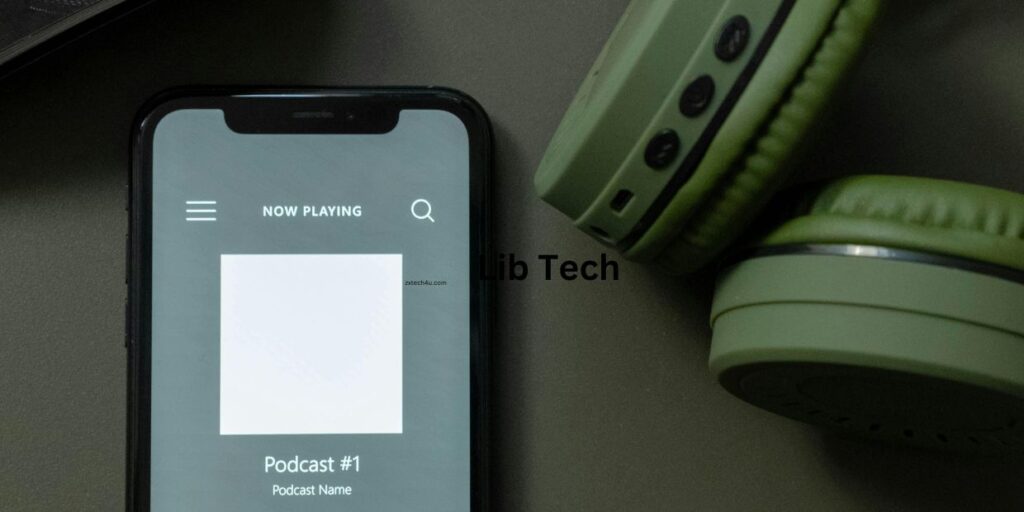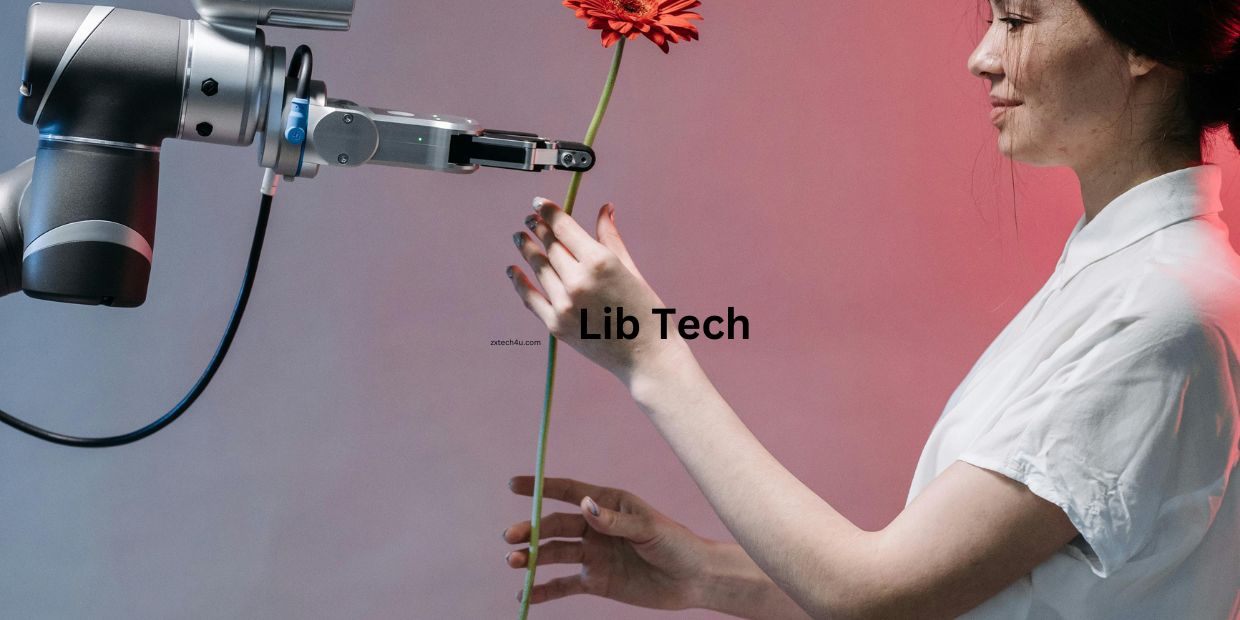
Lib Tech ever-evolving landscape of information technology libraries are not just silent sanctuaries of books; they are dynamic hubs of innovation and digital resources.
The term Lib Tech refers to the integration of advanced technology within library services enhancing the way we access manage and disseminate knowledge.
The Digital Shift
As we sail through the digital age libraries have embraced technology to meet the changing needs of their patrons. From online catalogs to digital archives the transformation is evident.
Lib Tech has made it possible for users to access a wealth of information with just a few clicks breaking down geographical barriers and democratizing knowledge.
Also Read This : Latest Technology Trends
Technology In Action
One of the most significant Lib Tech advancements is the implementation of digital lending platforms. These allow users to borrow e-books audiobooks and even stream video content remotely.
Moreover libraries have started to offer more than just books; they now provide access to cutting-edge tools like 3D printers VR headsets and maker spaces encouraging creativity and learning in new dimensions.
The Human Element
Despite the surge in digital services the human aspect remains at the heart of Lib Tech. Librarians are becoming tech-savvy guides helping patrons navigate the sea of digital resources. They offer workshops on digital literacy coding classes and one-on-one tech help sessions ensuring that everyone can harness the power of technology.
Also Read This: BetterThisTechs Article
Looking Ahead
The future of Lib Tech is bright and full of potential. With the rise of artificial intelligence and machine learning libraries could offer even more personalized experiences such as AI-driven research assistance or virtual reality tours of historical sites.
What Are Some Examples Of Maker Spaces?
Maker spaces are creative DIY spaces where people can gather to create invent and learn. They often have tools like 3D printers laser cutters woodshop tools and electronics. Here are some examples of activities and projects that might be found in maker spaces:
- Electronics: Soldering circuits building robots or creating custom controllers.
- Woodworking: Crafting furniture carving or constructing models.
Textiles: Sewing embroidery or screen printing.
- 3D Printing: Designing and printing 3D models prototypes or parts
- Coding: Developing software games or programming microcontrollers.
- Art: Making sculptures pottery or mixed media art.
What Are Some Benefits Of Using A Maker Space?
Makers paces offers a multitude of benefits that cater to learning creativity and personal development. Here are some key advantages:
Innovation and Creativity: They provide a platform for hands-on experimentation allowing individuals to innovate and create with a variety of tools and materials.
Real-World Problem-Solving: Makerspaces bridge the gap between theoretical concepts and practical applications helping users understand and solve real-world problems.
Resilience and Adaptability: The iterative process of making—designing prototyping testing and refining—teaches users to embrace failure as a learning opportunity.
Skill Development: Users can learn new skills or hobbies ranging from basic crafting to advanced technological competencies.
Access to Equipment: Makerspaces often provide access to specialized equipment that may not be readily available to most people like 3D printers and laser cutters.
Critical Thinking: They encourage critical thinking and problem-solving which are essential skills in today’s fast-paced ever-changing world.
21st Century Skills: Users develop a wide range of valuable skills including flexibility collaboration adaptability communication and technology literacy which are crucial for success in the modern workforce.
Educational Equity: By offering equal access to resources and learning opportunities makerspaces can help level the playing field for students of diverse backgrounds.
Engagement and Academic Performance: Engaged learning in maker spaces can lead to better school attendance higher graduation rates and improved academic performance.
What Are Some Examples Of Maker Spaces In Schools?
Makerspaces in schools come in various forms and serve different educational purposes. Here are some examples:
High-Tech Makerspaces: These are often found in high schools and universities and may include 3D printers and scanners laser cutters CNC machines embroidery machines power tools and video game consoles.
Low-Tech Makerspaces: Ideal for younger students these spaces might have materials like markers paint fabric cardboard LEGO® blocks and simple hand tools.
Dedicated Makerspace Rooms: Some schools have repurposed rooms or sections of libraries to serve as dedicated maker spaces equipped with various tools and materials for hands-on learning.
Mobile Makerspaces: For schools with limited space mobile makerspaces on carts or in closets can be used to transport materials and tools to different classrooms as needed.
Remote Makerspaces: To support distance learning schools might provide students with kits to create their own makerspace at home using common household items.
What Are Some Benefits Of Maker Spaces For Students?
Makerspaces provide a wealth of benefits for students fostering a range of skills and qualities essential for personal and academic growth. Here are some key benefits:
Hands-on Learning: Students can apply theoretical knowledge in practical ways enhancing their understanding and retention of concepts.
Innovation: Makerspaces encourage students to think creatively and develop their own ideas methods or products.
Resilience: By engaging in trial and error students learn to view failure as a learning opportunity rather than a setback.
Exposure to New Opportunities: Students can discover new interests and potential career paths they might not have considered before.
Critical Thinking and Problem-Solving: These spaces help develop the ability to analyze situations and devise effective solutions.
21st Century Skills: Makerspaces cultivate skills like flexibility collaboration adaptability communication and technology literacy preparing students for future success.
Educational Equity: They provide equal access to resources and learning opportunities helping to level the playing field for all students.
Improved Academic Performance: Engaged learning in maker spaces can lead to better school attendance higher graduation rates and improved academic performance.
What Are Some Examples Of Maker Spaces In Schools?
Makerspaces in schools can vary greatly but here are some examples that illustrate the diversity and creativity of these spaces:
High-Tech Makerspaces: These are often found in high schools and universities and may include 3D printers and scanners laser cutters CNC machines embroidery machines power tools and video game consoles.
Low-Tech Makerspaces: Ideal for younger students these spaces might have materials like markers paint fabric cardboard LEGO® blocks and simple hand tools.
Dedicated Makerspace Rooms: Some schools have repurposed rooms or sections of libraries to serve as dedicated maker spaces equipped with various tools and materials for hands-on learning.
Mobile Makerspaces: For schools with limited space mobile makerspaces on carts or in closets can be used to transport materials and tools to different classrooms as needed.
Remote Makerspaces: To support distance learning schools might provide students with kits to create their own makerspace at home using common household items.
For More Details : zxtech4u
What Is Lib Tech?
Lib Tech is a brand that specializes in creating innovative and environmentally friendly outdoor sports equipment including snowboards skis surfboards wakesurf boards and skateboards.
What Makes Lib Tech Products Unique?
Lib Tech products stand out due to their handcrafted quality use of sustainable materials and the incorporation of cutting-edge technologies like Banana Technology and Magne-Traction.
How Does Lib Tech Contribute To Environmental Sustainability?
Lib Tech is committed to reducing its environmental impact by using eco-friendly materials recycling waste and ensuring that their manufacturing processes are as green as possible.
Can I Register My Lib Tech Product For warranty?
Yes you can register your Lib Tech product for a one-year warranty against manufacturer’s defects from the date of purchase from an authorized dealer.
What Should I Do If I Encounter An Issue With My Lib Tech Product?
If you have a problem with your product you should take it back to the place of purchase or any authorized Lib Tech dealer. They will assist you in getting a Return Authorization (RA) number for inspection and potential repair
Are There Any Limitations To The Lib Tech Warranty?
The warranty covers defects in materials and workmanship but does not cover normal wear and tear excessive abuse or modifications made to the product.
What kind Of Support Does Lib Tech Offer For Repairs?
If your product requires repair Lib Tech has technicians who will work to restore your board to a ‘good as new’ condition typically within 10 working days

